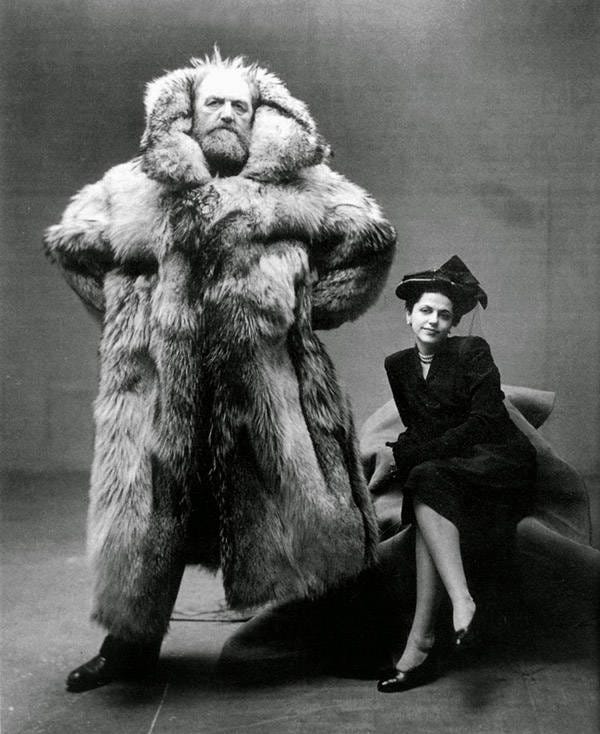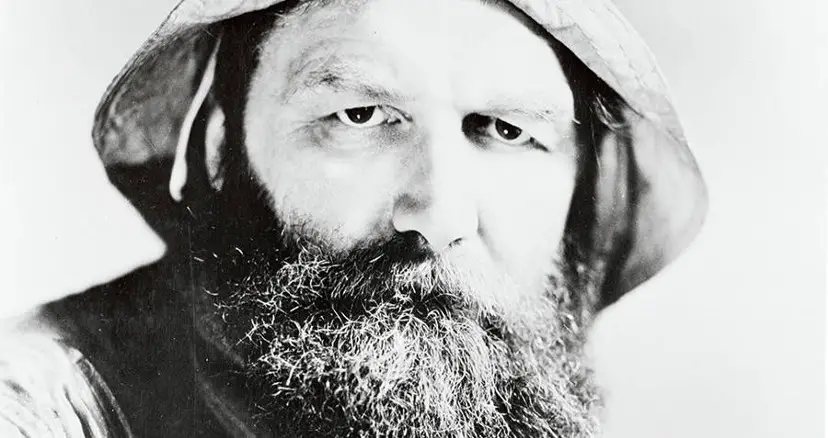 orenz Peter Elfred Freuchen was a quite popular persona in the first half of the 20th century. There have been a lot of articles written online about his famous adventures, one of the most noted is his trip to the Arctic in 1926 where most of the headlines you can find out there mention him using a knife made from his own frozen feces in order to cut through some frozen dogs in order to survive.
orenz Peter Elfred Freuchen was a quite popular persona in the first half of the 20th century. There have been a lot of articles written online about his famous adventures, one of the most noted is his trip to the Arctic in 1926 where most of the headlines you can find out there mention him using a knife made from his own frozen feces in order to cut through some frozen dogs in order to survive.
Before we discuss the reliability or validity of his story, here is a short section explaining who Freuchen was and what made him so famous during the 1930s. His egocentric life is filled with so many wild and “close to death” experiences that it should make you question if all he lived is actually true.
A life full of “wisdom”
Peter Freuchen was born in Denmark in February 1886 and from a young age, he loved exploring. He had a true passion for history books about explorers such as Marco Polo. As he grew up he dreamed of becoming a doctor, which is why he studied to become one, but the life that contemporary society offered to him wasn’t for his liking. In his autobiography titled “The Vagrant Viking” which he published in 1953, he mentioned that “the first victims of my hunter’s instincts were my early instructors”.
He didn’t like people or rules set by society, so he decided to follow his childhood dream of becoming an explorer. In the beginning, he signed up for every polar expedition out there in the hopes to get his name out. He was completely obsessed with exploring the uncharted wilderness of the North Pole and Greenland.
His first expedition took place in 1906 when he was only 20 years of age. He and a friend of his named Knud Rasmussen sailed to the North Pole and once they have reached the north of Greenland, they traveled another 600 miles across the frozen grounds in looking for the natives. All they had on them was a dogsled and a few supplies (as per the autobiography).
They eventually met with Inuits who welcomed them into their small community and tried to learn their language. He learned how to hunt polar bales and even whales from the natives. His expedition across Greenland lasted until 1912 after he undertook six more major expeditions around the world.
Based on another autobiography that Freuchen had written entitled “Book of the Seven Seas” until 1933 he had an expedition in each of the seven seas. Based on the big number of expeditions, I would need to write an actual book to describe all of them, but based on what he says we could consider him the most prolific explorer of the 20th century, to say the least.
After his explorations, he even became a Hollywood star with movies such as Eskimo (1933) and Midnattssolens son (1939) among others. When these movies came out, they were quite the hit within the cinematic industry and something that has put his name on the front page of many newspapers. Freuchen loved to be in the middle of attention and it wasn’t difficult being 6’7 and having a mean face.

One of the more different stories mentioned in his autobiography was in 1940 when Germany invaded Denmark during World War II. He claims to have been part of the Danish Resistance where he tried to hide Jewish refugees and subvert Nazi operations. He was initially captured and sent to a death camp, but he managed to escape and find refuge in Sweden.
Freuchen became friends with Mae West, bench-pressed Jean Harlow at a party once, and was actually on a live television show named “The $64,000 Question”. Very similar to today’s adaptation “Who Wants to Be a Millionaire?” you had to answer general knowledge questions until you reach the big prize of $64,000, a calculation for inflation that is about $700,000 today. He somehow managed to answer every question right and win the big prize.
Besides all this, his life was filled with plenty of other events and adventures where he seems to be portrayed as the main character, more like the hero of every situation he encountered.
Something that doesn’t add up
What does not really add up and what makes me think that his life story is a bit of a facade from the actual truth is an out-of-the-ordinary experiment. As mentioned in the beginning, if you look up Peter Freuchen online you will be bombarded with headlines regarding him using his own feces to survive in one of his explorations.
This is a story taken from his autobiography “The Vagrant Viking” that occurred in 1926 when he went on an exploration to the Arctic. A crazy blizzard storm came out of nowhere and demobilized his dogs, forcing him to take shelter under the sled. The dogs stayed around the sled but after the snow had stopped they froze to the sled whilst being buried under heavy snow.
After 30 hours the storm passed and Freuchen tried to leave, but he was not able to break the ice with his bare hands. This is where Freuchen says that he had used his own feces to create a knife. Based on his story, the knife made from frozen feces was strong enough to break the ice wall, but recent research says otherwise.
A scientific experiment carried out by the Department of Anthropology from Kent State University in 2019 had tried to bust the legend of an Inuit man who manufactured knives using frozen feces to butcher his prey. One of the scientists kept a diet similar to a native living in the Arctic Circle for 8 days and after used a mold to craft a knife using his own feces and freeze it. After the knife became solid ice, the team tried to cut through the hide of a wolf (as the legend says), but with no luck.
This means that Freuchen’s story is false and usually when a person lies about one aspect, they actually are lying about most of them. Interestingly enough, Freuchen was alone on that particular expedition, so he could have said anything and anyone would have believed him. His books were all published after he became famous through his movies, therefore he maybe was desperate for more attention, leading him to create fake stories.
In light of this new evidence, most of the articles published about this particular expedition are wrong and misinforming people all over the internet. Another issue that we are faced with is that people are so gullible and they always have been. You can tell them anything and they will most likely not be given a second thought. These are the same people which indirectly support such misinformation and historical bias on the internet, as is apparent even in old books.
The question now is, what else did Freuchen lie about within his autobiographies? Marco Polo’s stories were twisted with the intent to make a financial gain off his book, so I don’t think Freuchencase is any different. Be aware of what you read!
Avid Writer with invaluable knowledge of Humanity!
Upcoming historian with over 30 million views online.
“You make your own life.”




